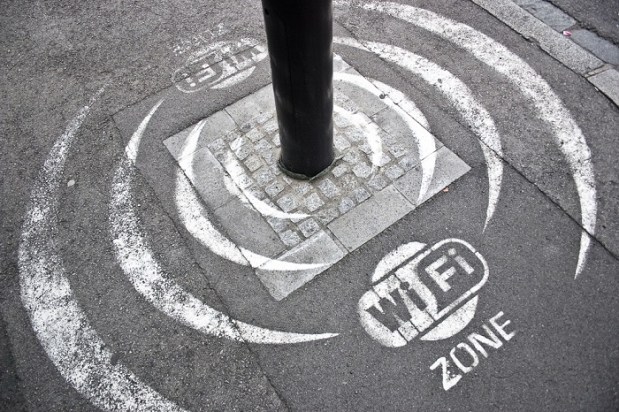Is Public Wi-Fi IoT’s Greatest Ally Or Biggest Flaw?

What’s the biggest impediment to the coming Internet of Things revolution? Some might say uneven development standards or a lack of public awareness about how IoT could actually change lives if people cared to pay attention. The truth is that IoT’s biggest proponents have been fighting these uphills battles for years, but it’s only now that another of the smaller roadblocks to an IoT future — a lack of widespread, high-performance Wi-Fi networks — might have taken care of itself.
SlashGear has the story of New York City’s efforts to replace nearly all of its old payphone booths with completely free Wi-Fi hotspots. The service, known by the name “LinkNYC,” allows Manhattanites to connect to any of the eventual 7,500 kiosks to be installed across the five boroughs. All New Yorkers have to do is register their email addresses, and they’ll be able to automatically connect to the networks that transmit about 150 feet from each kiosk.
“It will take a lot of other innovation, but LinkNYC is an example of what we can do,” NYC Mayor Bill de Blasio said in a statement at the launch of the first public Wi-Fi hotspots last week. “We put our heads together; we create. We take something that was in the past that now needs to be converted to something very different to serve our future.”
For all the trumpet-sounding that de Blasio and NYC are doing over their new public Wi-Fi networks, it could be a while before a city the size of New York — with its divided administration — actually rolls out coverage to the entire city. Why would this be a problem for IoT? If customers and retailers begin to rely on municipal networks to plug the gaps between private ones in retail storefronts, inadequate coverage could lead to frustrating experiences. Are signal dropouts and disruptions more frustrating for customers when they expect things to work or when they don’t?
Maybe the U.S. isn’t the best focus group for high-tech advancements, though, which is why Seoul has the global tech crowd excited about the South Korean government’s plan to connect the entire city with a $374 million Wi-Fi coverage plan. The city’s subway system already includes free 4G and Wi-Fi. Perhaps, Seoul could achieve citywide free Wi-Fi by 2017, according to Yonhap News Agency.
Retailers don’t need to be told of the potential benefits of having their customers always connected and ready to interact. However, just because networks are available doesn’t mean that every consumer is going to find their way to retailers’ sites. In fact, it’s just as, if not more, likely that the average Wi-Fi user doesn’t have much of a clue what they’re doing.
At this year’s Mobile World Congress, mobile and PC security firm Avast Software wanted to examine consumer behaviors when offered access to free Wi-Fi networks at the Barcelona airport without first checking to see if they were safe to do so. While one might expect the crowd attending a conference like MWC to be a little conscious when it comes to mobile security, Avast found that, in just four hours, more than 2,000 people logged onto networks set up by Avast with intentionally misleading names like “Starbucks” and “MWC Free WiFi.” More than 8 million data packets were transmitted, and though Avast didn’t save any personal information, it was easily able to track which websites users visited, whether they searched for information on Google and what kind of apps they have installed on their devices.
What should really send shivers down MWC attendees’ spines, though, is the fact that Avast could identify the unique identity of both user and device for every connection to its faux Wi-Fi networks.
“With most Mobile World Congress visitors traveling from abroad, it’s not surprising to see that many opt to connect to free Wi-Fi in order to save money, instead of using data roaming services,” Gagan Singh, president of mobile at Avast, said in a statement. “When taking this route, people should utilize a VPN service that anonymizes their data, while connecting to public hotspots to ensure that their connection is secure.”
If VPNs are required for free, public Wi-Fi to thrive, municipal administrators might as well smother the idea in its crib. If anything, the average consumer’s insistence on accessible Internet access all but negates the idea of inserting more security hoops for them to jump into the process — however necessary they may be.